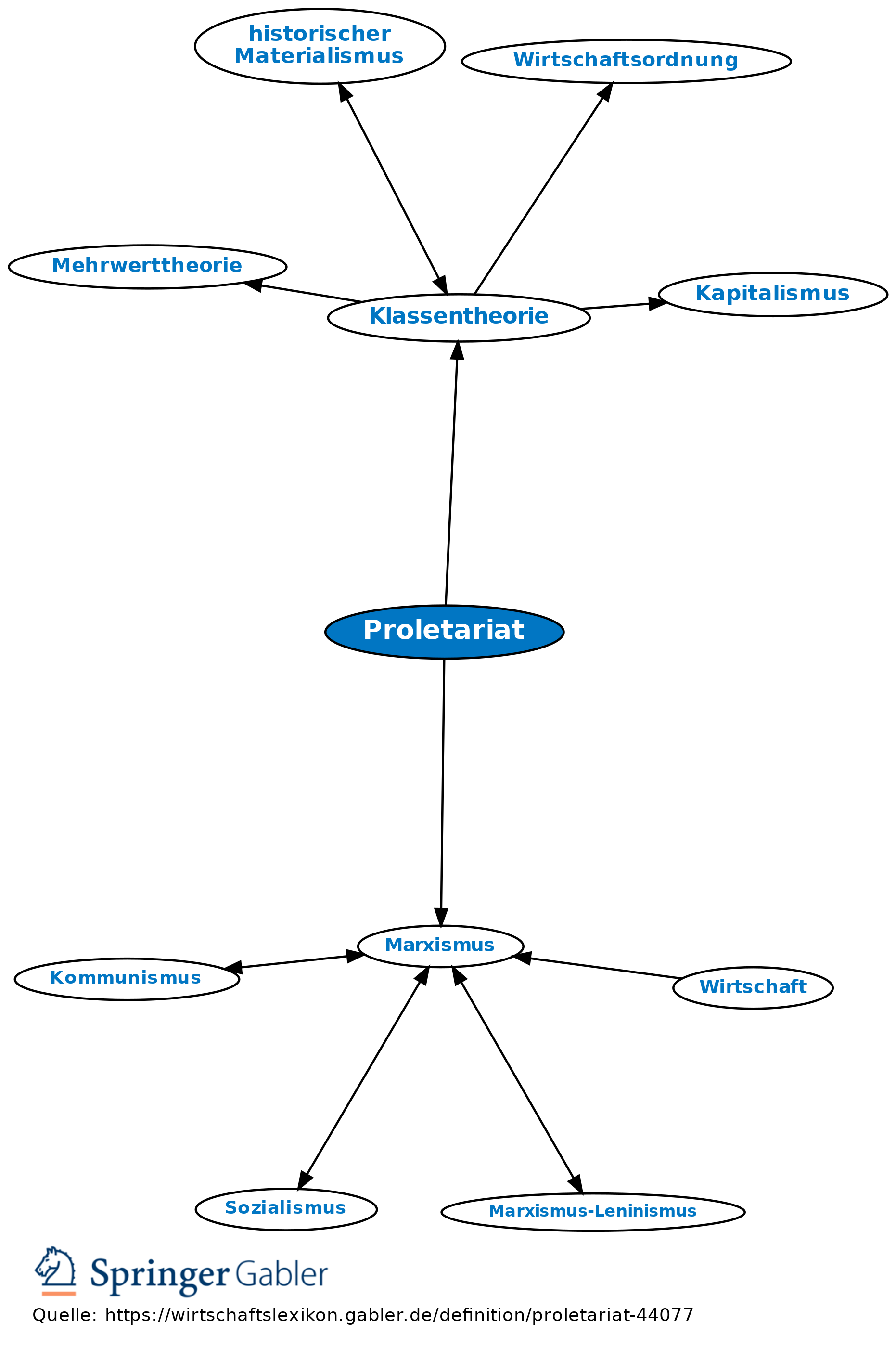Imagine a world where you wake up each morning, not to your own home, but to a cramped shared room in a dilapidated building. You then head to a factory, not out of passion or purpose, but because you need the wages to survive. You work tirelessly, making products you’ll never own, under the watchful eye of a powerful employer who holds your livelihood in their hands. This is the reality of the proletariat, a class of people whose lives are defined by their relationship to the means of production, and whose stories weave the very fabric of our societies.

Image: wirtschaftslexikon.gabler.de
The term “proletariat” might sound archaic, a vestige of a bygone era. But understanding this sociological concept is crucial to grasping the complexities of our modern world. It unravels the power dynamics that drive our economies, unveils the struggles faced by countless individuals, and sheds light on the constant push-and-pull between different social groups. In this article, we will dive deep into the heart of the proletariat, exploring its definition, historical roots, and continuing relevance in a rapidly changing world.
The Proletariat: A Sociological Lens
The term “proletariat” originates from ancient Rome. It referred to the lowest class of citizens, those who possessed only their children (proles) as their assets. Fast forward to the 19th century, and the term is repurposed by Karl Marx and Friedrich Engels in their seminal work, The Communist Manifesto. In Marxist theory, the proletariat is defined as the class of wage laborers who do not own the means of production, essentially the tools and resources necessary to create goods or services. This means they must sell their labor power to employers for a wage.
In a capitalist system, the proletariat is inherently at the mercy of the bourgeoisie – the owning class. The bourgeoisie controls the means of production and thus holds the power to dictate wages, working conditions, and even the very existence of the proletariat. This inherent power imbalance lies at the heart of Marx’s concept of class struggle, where the proletariat is seen as the driving force of societal change, eventually leading to a revolutionary overthrow of the capitalist system.
Beyond Marx: Understanding The Proletariat Today
While Marx’s theory provides a powerful framework, it’s crucial to acknowledge that the concept of the proletariat has evolved and expanded beyond its original Marxist interpretation. Many contemporary sociologists argue that the proletariat represents not simply a group defined by their lack of ownership of the means of production, but also by their lack of control over their working lives. This means considering the wider context of precarious work, the rise of the gig economy, and the ever-growing divide between labor and capital.
The concept of the precariat, coined by Guy Standing, further expands our understanding of the proletariat. Standing argues that the precariat, composed of those in precarious employment, faces a unique set of challenges. They lack job security, have unstable incomes, and often lack the social protections enjoyed by traditional workers. This group encompasses a diverse spectrum including gig workers, freelancers, and those in temporary or contract-based employment. They represent a growing segment of the workforce, highlighting the vulnerability inherent in the current global economic system.
The Enduring Legacy of the Proletariat
The concept of the proletariat remains relevant today because it helps us understand the root causes of social and economic inequality. By highlighting the persistent power imbalances between those who own the means of production and those who must sell their labor, it exposes the vulnerabilities inherent in capitalist systems. Recognizing the proletariat’s struggles is vital for fostering a society that prioritizes equity, social justice, and a more equitable distribution of resources.

Image: en.wikipedia.org
Moving Forward: Empowerment and Action
The insights gleaned from understanding the proletariat are not just academic exercises. They offer a powerful call to action. Individuals and communities must recognize the interconnectedness of our societies and work towards creating a more just and equitable world. This can take various forms, from advocating for better labor laws and social safety nets to supporting workers’ rights movements and promoting economic justice.
Understanding the experiences of the proletariat requires empathy, compassion, and a willingness to engage in respectful dialogue. We must acknowledge the inherent power dynamics at play and work collectively to build a future where every individual has the opportunity to thrive, regardless of their relationship to the means of production.
Proletariat Definition Sociology
Conclusion
The proletariat represents a diverse and often overlooked group within our societies. Recognizing their stories, their struggles, and their resilience is crucial to building a more just and sustainable world. By examining the concept of the proletariat through a contemporary lens, we gain valuable insights into the complexities of our economic systems, the challenges faced by a significant portion of the global workforce, and the ongoing quest for social justice. As we move forward, let’s be mindful of the power differentials that persist and actively work to create a future where everyone has the opportunity to live with dignity and purpose.






